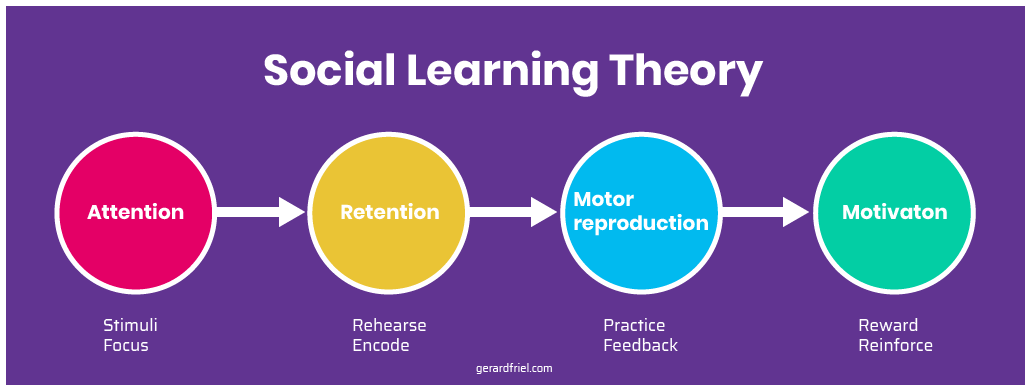
Do you only allow one or two students in a training drill at a time, prohibiting others from watching? If so, you are not the only one. Some trainers worry that letting students watch others practicing scenarios will disturb their learning pattern. They will even go as far as instructing the students in the room to keep their actions in the scenario a secret so they don’t find out until they get into the training room themselves. According to Bandura’s Social Learning Theory, it is actually beneficial to have others watch and learn from example. There is no need to keep training a secret.
The Bandura Social Learning Theory
In 1977, social cognitive psychologist Albert Bandura discovered that people learn through watching others’ behavior and the outcomes (L., 2019). From this discovery came the Social Learning Theory, which can assure trainers that it is not a bad idea to let students watch and learn from others’ mistakes. The key to the Social Learning Theory is that people must have motivation to emulate the actions of others. In this case, part of their motivation comes from wanting to succeed in training.
VirTra’s Approach to Use of Force Training
VirTra Subject Matter Expert Lon Bartel taught force-on-force courses all around the country and chose to run drills with entire groups of trainees watching. “We learn by watching others, and not only what we should do but also what we shouldn’t do,” said Lon. “We learn by modeling, so nothing says you can’t have people watch others go through the scenario.”
Lon also brings up the point that students can have extra stress levels and motivation added on when they know their peers are watching. “Let’s face it, we hate failing when performing in front of our peers,” said Lon, “it freaks us out.” In addition to modeling behavior, students are encouraged to perform well in order to avoid making a mistake in front of the class.
When students observe a peer’s mistake and the correction issued by the instructor, they have already learned something and will likely avoid making the same mistake. In addition, if a student performed an action particularly well, others will model that behavior.
While Bandura’s Social Learning Theory is not the only way people learn, it can still save time and allow the class to learn faster. Training isn’t the same thing as testing, so although it isn’t necessary for people to watch, it won’t do any harm. Whether it is during a force-on-force drill or inside a VirTra simulated scenario, remember how powerful observation can be in education.
References:
L., D. (2019, February 7). Social Learning Theory (Bandura). Retrieved from Learning Theories: https://www.learning-theories.com/social-learning-theory-bandura.html
Recently Published
Join Our Newsletter







